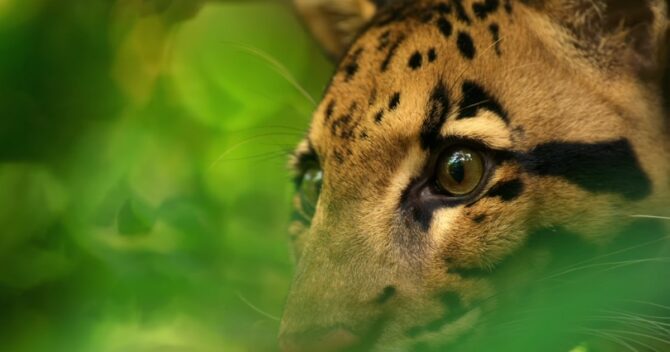Shyness is not an emotion exclusive to humans, many animals also exhibit this trait. Some animals are so shy that they rarely come out of hiding, making them a rare sight to behold.
In our article, we will explore the world of timid animals, their unique characteristics, and the reasons behind their shyness. From the elusive snow leopard to the adorable slow loris, we will introduce you to 18 of the most timid animals on the planet.
Key Takeaway:
- Shyness in animals can be a result of various factors such as evolution, genetics, and past experiences.
- Some shy animals are social and live in groups, while others are solitary.
- Some shy creatures, despite their cute looking, can be very dangerous to humans
17. The Elusive Snow Leopard
Snow leopard is large a long-haired Asian cat that inhabits the mountains of central Asia and the Indian subcontinent. The elegant and well-camouflaged snow leopard is one of the world’s most elusive cats.
Thinly spread across 12 countries in central and south Asia, it’s at home in high, rugged mountain landscapes. But habitat deterioration, loss of prey species, retaliatory killings due to human-wildlife conflict, poaching, and climate change are now threatening their survival.
There are many interesting facts about this beautiful, spotted wildcat, thick enough to insulate them from the cold. Their wide, fur-covered feet distribute their weight over soft snow.
Did you know that snow leopards can’t roar. Snow leopards have a ‘main’ call described as a ‘piercing yowl’ that’s so loud it can be heard over the roar of a river.
Did you know that some snow leopards have been known to leap up to 9 metres – 6 times their body length!
16. The Adorable and Dangerous Slow Loris

Left alone, the slow loris is unhurried, foraging at night for fruit, nectar, insects, and small mammals. Often known as the ‘shy one’, this gentle, but venomous, primate is facing a desperate struggle for survival.
The slow loris monkey is one of the few venomous mammals. The brachial gland is located in a relatively hair-free, slightly raised area in the flexor region of the upper arm.
How slow is the slow loris?
The 18th Century explorers who first described them thought that they were sluggish and sloth-like, and so, the term ‘slow loris’ was born. It’s a bit unfair though. Yes, they stay still for hours on end.
Yes, they tend to move slowly, and yes, they freeze and hide behind their hands when they’re startled, but they can also shift when they need to, for instance, when catching a bug or dodging a predator.
Did you know that these nocturnal furballs have deadly venom that can send you into anaphylactic shock?
15. The Hidden Life of the Giant Panda
The panda, with its distinctive black and white coat, is adored by the world and considered a national treasure in China. This bear also has a special significance for WWF because it has been our logo since our founding in 1961.
The giant panda, a black-and-white bear, has a body typical of bears. It has black fur on its ears, eye patches, muzzle, legs, and shoulders. The rest of the animal’s coat is white. Although scientists do not know why these unusual bears are black and white, some speculate that the bold coloring provides effective camouflage.
In patches of dense bamboo, an immobile giant panda is nearly invisible, and virtually disappears among snow-covered rocky outcrops on a mountain slope. This theory does not work, however, when considering that giant pandas have no natural enemies to hide from.
Scientists are not sure how long giant pandas live in the wild, but they are sure it is shorter than lifespans in zoos. They estimate that lifespan is about 15-20 years for wild pandas and about 30 years for those in human care. Chinese scientists have reported zoo pandas as old as 35. The Smithsonian National Zoo’s Hsing-Hsing died at age 28 in 1999.
14. The Secretive Red Panda – Treasure of the eastern Himalayas

The red panda, also known as the lesser panda, is a small mammal native to the eastern Himalayas and southwestern China. It has dense reddish-brown fur with a black belly and legs, white-lined ears, a mostly white muzzle, and a ringed tail.
Despite sharing a common name, red pandas are not closely related to giant pandas—often considered the real pandas. Phylogenetically, the red panda falls under a unique taxonomic group called Ailuridae, sharing common traits with mustelids, which include raccoons, weasels, and skunks.
Did you know that the giant panda and the red panda are the only two panda species found on the earth.
13. The Koala – Symbol of peace the world over
The koala, sometimes called the koala bear, is an arboreal herbivorous marsupial native to Australia. It is the only extant representative of the family Phascolarctidae and its closest living relatives are the wombats.
It is a robust animal with a large head and vestigial or non-existent tail. … It has a body length of 60–85 cm (24–33 in) and a weight of 4–15 kg (9–33 Ib).
This animal is a symbol of tranquility, peace, and protection the world over. A eucalyptus-leaf-eating member of the marsupial family, the Koala is also a kind, gentle, and caring animal, resembling a small bear. It generally brings a sense of security and happiness.
In the Australian bush, koalas rarely drink water as the majority of their water intake comes from eating fresh eucalyptus leaves.
Did you know that the word “koala” is thought to originate from one of the Australian Aboriginal languages, Dharug, which roughly translates to ‘no drink‘ or ‘no water‘?
12. The Elusive Tarsier – The biggest eyes of any mammal
Tarsiers are little-known nocturnal primates, about the size of a tennis ball. Once more widespread, tarsiers are now limited to the Southeast Asian islands of the Philippines, Malaysia, Brunei, and Indonesia. There are 10 tarsier species and four subspecies, belonging to a sister group of monkeys and apes. Extinction threatens all tarsier species, to some degree.
There are three types of tarsiers: Eastern, Western, and Philippine. Eastern tarsiers inhabit Sulawesi and the surrounding islands, Philippine tarsiers are limited to the Philippines and have a bald tail and hairless feet, while Brunei, Borneo, Indonesia, and Malaysia host populations of Western Tarsiers, which have tails with tufts at the end.
The Philippine and Western tarsiers are predominantly lowland species. Eastern tarsiers are spread across many habitats and elevations, except for the pygmy species, which is solely found above 1,600 feet.
The pygmy variety was thought to have gone extinct when it wasn’t spotted between 1921 and 2008. To Myron Shekelle, Ph.D., an instructor and research associate in the biology department at Western Washington University, tarsiers are way more than their weird mashup of features; they are a fascinating example of primate evolution.
Shekelle has conducted decades of research contributing to what we know about tarsiers and primate evolution.
“When I handed in my first grant proposal, which would have been in 1993, or 1994, one of the reviewers commented, ‘Shekelle has outlined a career’s worth of research,’ and now … I’m just about to the point where I can publish the answer to the questions I posed in that research grant proposal all those years ago,” he says.
Did you know that they have the biggest eyes of any mammal relative to their body weight – each eyeball is approximately 16 millimetres (0.63 in) in diameter?
11. The Mysterious and Enigmatic Okapi
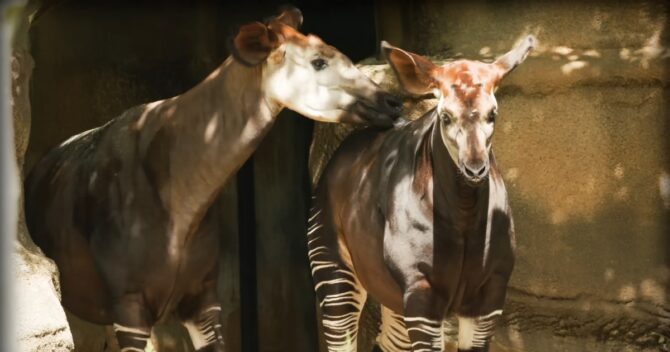
The mysterious and enigmatic okapi is one of the oldest mammals on Earth, but it has only been known to the Western world since the early 20th century. Covered in unusual markings on their rump and legs, okapi are elusive, shy, and gentle, and nearly impossible to observe in the wild due to their secretive nature.
Did you know that the okapi has only one natural predator, the leopard?
Even today, little is known about their way of life in the wild as they are timid creatures that live in dense, shady rainforest areas, far from human settlements. Okapis are largely solitary animals who only come together to mate.
Believe it or not, Okapi are part of the giraffe family.
10. The Clouded Leopard – You will never see him during the day
The clouded leopard, also called mainland clouded leopard, is a wild cat inhabiting dense forests from the foothills of the Himalayas through Northeast India and Bhutan to mainland Southeast Asia into South China.
It was first described in 1821 based on the skin of an individual from China. Larger than small cats and smaller than big cats, males are twice the size of females, with females weighing 22 to 30 pounds and males weighing 44 to 55 pounds. They measure 26 to 41 inches in length and stand 10 to 16 inches at shoulder height. This beautiful animal hides high in the trees during the day.
Did you know that The clouded leopard is one of the most arboreal of all cats?
9. The serious appetite of The Aardvarks
View this post on Instagram
The aardvark is a medium-sized, burrowing, nocturnal mammal native to Africa. It is the only living species of the order Tubulidentata, although other prehistoric species and genera of Tubulidentata are known. This animal has long, sticky tongues, which can be up to 12 inches (30 centimeters) long.
Aardvarks are more closely related to elephants than anteaters, despite their appearance.
Aardvarks are most at risk due to bush meat trade and habitat loss, which is being made worse by caused by climate change.
“The aardvark can eat up to 50,000 ants in one night. Now that’s a serious appetite!”
8. The Pangolins – You are 100% safe with them
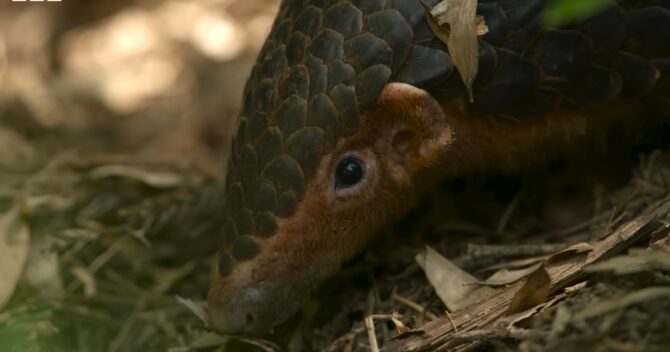
Pangolins, sometimes known as scaly anteaters, are mammals of the order Pholidota. The one extant family, the Manidae, has three genera: Manis, Phataginus, and Smutsia. Manis comprises four species found in Asia, while Phataginus and Smutsia include two species each, all found in sub-Saharan Africa.
They are highly prized in many parts of their range as meat and increasingly for their unique scales, particularly in China and Vietnam. While they are a potent defense against predators, their scales are useless against poachers, and all species in Asia and Africa are now under threat.
The giant ground pangolin, tree pangolin, and Indian pangolin are all on the endangered species list. These animals are shy and will not attack humans. Wildlife crime is the greatest threat to pangolin, so if you want you can join our Stop Wildlife Crime campaign and pledge to help threatened species including the pangolin.
7. Sloth – Seems cute, but do not touch them
“The sloth is so slow, it takes two weeks to digest its food. Talk about a lazy digestive system!”
“Sloths can be cute and cuddly, but they do not like to be touched.”, she warns
The owner of the pet store says the teen got too close to the sloth, which he says mistook her arm for an apple.
6. Giant Anteater – Peaceful killer
The giant anteater is an insectivorous mammal native to Central and South America. It is one of four living species of anteaters, of which it is the largest member.
The only extant member of the genus Myrmecophaga, it is classified with sloths in the order Pilosa. Although they are usually not a threat to humans, giant anteaters can inflict severe wounds with their front claws.
Two fatal attacks
Between 2010 and 2012, two hunters were killed by giant anteaters in Brazil; in both cases, the attacks appeared to be defensive behaviors. The case studies of two fatal attacks by giant anteaters were described in the journal Wilderness and Environmental Medicine, which released the paper online this month, ahead of its publication in the December print issue.
“Both were farmers, were hunting and were attacked by wounded or cornered animals,” lead author Vidal Haddad of the Botucatu School of Medicine at Sao Paulo State University told AFP.
In the first case, a 47-year-old man was hunting with his two sons and his dogs when they came upon a giant anteater in northern Brazil. The hunter did not shoot at the animal, but he approached it with his knife drawn.
The anteater stood on its hind legs and grabbed the man with its forelimbs, causing deep puncture wounds in his thighs and upper arms. The hunter bled to death at the scene, said the report, which noted that the encounter happened on August 1, 2012, but had not been described in scientific literature until now.
The other case involved a 75-year-old man who died in 2010 when an anteater used its long front claws—which typically help it dig into anthills—to puncture his femoral arteries, located in the groin and thigh.
5. Fennec Fox – Cute, but bad choice to be pet
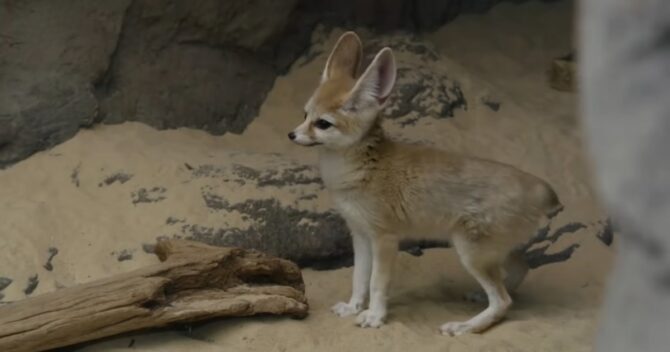
The fennec fox is a small crepuscular fox native to the deserts of North Africa, ranging from Western Sahara and Mauritania to the Sinai Peninsula. Its most distinctive feature is its unusually large ears, which serve to dissipate heat and listen for underground prey.
The fennec’s fur is prized by the indigenous peoples of North Africa, and it is considered an exotic pet in some parts of the world. Its name comes from the species’ Arabic name: fanak (فَنَك). Fennec foxes may be cute, but they do not make good pets. In fact, in many jurisdictions, it is illegal.
They typically do not enjoy being cuddled, or even handled by their owners. These animals are cautious by nature and prefer to run from an enemy rather than fight, nonetheless, they are prone to biting when scared or nervous.
They are territorial, difficult to house train, and can be destructive. Not to mention the specialized diet, health care, and socialization with other fennec foxes they need to have a high quality of life. Their head and body are 9.5 to 16 inches long and their tail is 7 to 12 inches long.
Did you know that The fennec is the smallest fox species?
4. Notoriously shy Red Squirrel
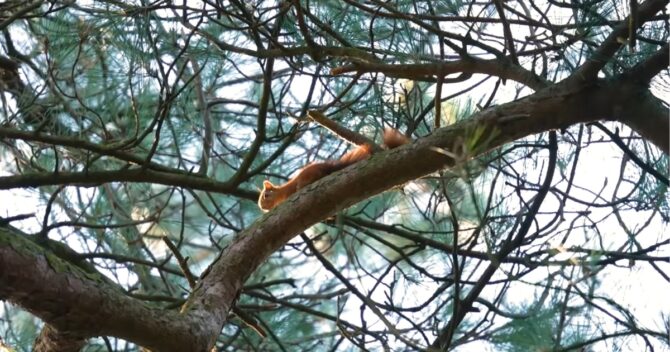
The red squirrel or Eurasian red squirrel is a species of tree squirrel in the genus Sciurus common throughout Europe and Asia. The red squirrel is an arboreal, primarily herbivorous rodent. In Great Britain, Ireland, and Italy numbers have decreased drastically in recent years. What are the main threats to red squirrels? It will sound strange, but the answer is The grey squirrel.
This is the main reason for the decline of the red squirrel. Habitat loss has also contributed to the red squirrel’s decline. Red and grey squirrels disagree on more than just territory. For example, they’re not reproductively compatible.
This occurs when areas of woodland are destroyed or become separated by development and changing land use. Some people are lucky enough to have red squirrels visit their gardens regularly, but if like me you’re not one of them, wherever you choose to squirrel-watch you’ll have to be quiet and patient because red squirrels are notoriously shy animals.
3. The Shy but aggressive Meerkat with a nasty bite
The meerkat or suricate is a small mongoose found in southern Africa. It is characterized by a broad head, large eyes, a pointed snout, long legs, a thin tapering tail, and a brindled coat pattern.
The head-and-body length is around 24–35 cm, and the weight is typically between 0.62 and 0.97 kg.
“Meerkats can be managed as solitary animals with appropriate care“ says Jason Jacobs, an L.A. Zoo spokesman.
2. The Axolotl – wash your hands before you

The axolotl is a paedomorphic salamander closely related to the tiger salamander. It is unusual among amphibians in that it reaches adulthood without undergoing metamorphosis. Instead of taking to the land, adults remain aquatic and gilled.
Is it OK to touch an axolotl?
1. The Satanic Leaf-tailed Gecko – Expert at Camouflage
The gecko’s name “Satanic” comes from the spiky projections on its body and head, which some people thought resembled horns or thorns. The name “phantasticus” in its scientific name means “fantastic” or “imaginary,” referring to its bizarre appearance. This strange animal is a small species of gecko that can be found only on the island of Madagascar.
The gecko occurs in a variety of colors, including hues of purple, orange, tan, and yellow, but is often mottled brown, with small black dots on the underside that help to distinguish it from similar species. It has long spines on the head, body, and trunk.
The tail is flattened and has a leaf-like appearance. Some geckos even have notches in their tails to further mimic a decaying leaf and this trait seems more common in the males of the species.
This creature has an eyelash-like projection above each eye. During daylight hours, these adaptations help the gecko blend into its surroundings. At night it helps the gecko hunt for prey by providing camouflage.
“The Satanic leaf-tailed gecko can camouflage itself as a leaf, but it still can’t hide from its own reflection in a mirror.”
FAQ
Why are some animals shy?
Shyness in animals can be a result of various factors such as evolution, genetics, and past experiences.
Are all shy animals solitary?
No, some shy animals are social and live in groups, while others are solitary.
Are shy animals more vulnerable to predators?
Not necessarily, shyness can also be a survival strategy for some animals to avoid predators.
Can shy animals be trained to be more outgoing?
It depends on the individual animal and the reasons behind its shyness.
